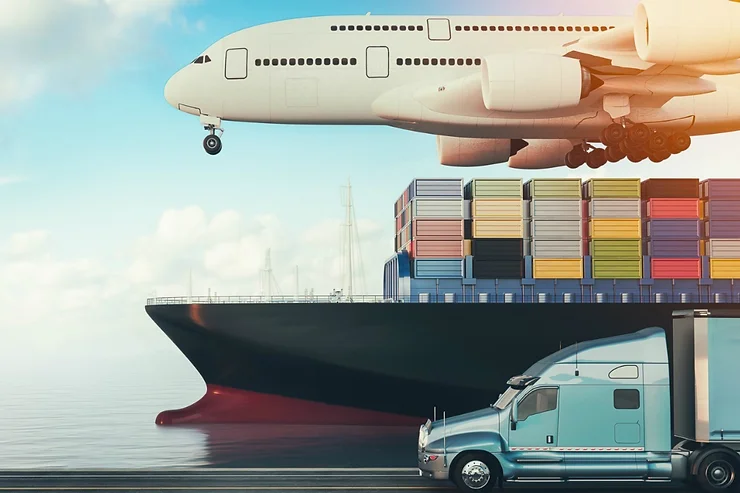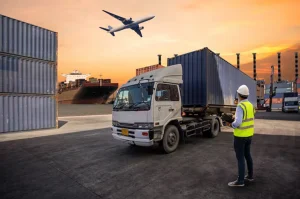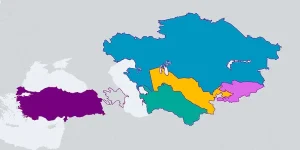Central Asia is a landlocked region that consists of five countries: Kazakhstan, Uzbekistan, Turkmenistan, Kyrgyzstan, and Tajikistan. Due to its geographical location and landlocked nature, transporting freight to Central Asia can be a bit complex, but there are several ways to do so.
Here are the main methods explained:
Rail Freight to Central Asia
Central Asia has an extensive rail network that connects it to various neighboring countries. The Trans-Caspian Railway, for instance, connects Europe to Central Asia through the Caspian Sea region. The China-Central Asia rail routes (such as the New Silk Road or Belt and Road Initiative) have gained prominence, connecting China to Europe through Central Asia. These rail routes offer a relatively quick and efficient way to transport goods.
Road Freight to Central Asia
Road transportation is another option for delivering freight to Central Asia. International highways and road networks connect neighboring countries like Russia, China, and Iran to Central Asian nations. However, road transportation might be slower compared to rail and might involve multiple border crossings, customs checks, and other bureaucratic procedures.
Air Freight to Central Asia
Air freight is the fastest way to transport goods, especially if they are time-sensitive. Major cities in Central Asia, such as Almaty, Tashkent, and Bishkek, have international airports that can handle cargo. However, air freight can be costly, especially for larger and heavier shipments.
Sea Freight and Transshipment to Central Asia
While Central Asia is landlocked, some freight can be transported via sea routes to nearby ports and then transshipped to Central Asia. For example, goods can be transported to Iranian ports like Bandar Abbas and then sent overland to Central Asian countries.
Caspian Sea Shipping to Central Asia
The Caspian Sea, though landlocked, offers some opportunities for shipping goods. Cargo ships can navigate the Caspian Sea, connecting ports in Kazakhstan, Turkmenistan, and other Caspian littoral states. This method can be particularly useful for bulk cargo.
Multimodal Transportation to Central Asia
Some logistics companies, including Toptrans, offer multimodal transportation solutions, combining different modes of transportation (e.g., sea, rail, and road) to optimize the delivery process. This approach can help overcome the challenges posed by Central Asia’s landlocked geography.
Customs and Regulations
When transporting freight to Central Asia, it’s crucial to be aware of the customs regulations, import and export requirements, and any necessary permits. The bureaucratic processes at border crossings and customs can sometimes be time-consuming and complex, so proper documentation and compliance are essential.
Infrastructure and Connectivity
The effectiveness of these freight transportation methods depends on the quality of infrastructure, border-crossing efficiency, and overall connectivity between countries. Some routes might be better developed and more efficient than others.
It’s important to work with experienced freight forwarders or logistics companies like TopTrans that have expertise in handling shipments to Central Asia. For example, we can help navigate the complexities of the region’s transportation and regulatory landscape, ensuring that your goods reach their destination in a timely and cost-effective manner.
Pros and Cons about Freights to Central Asia
Transporting freight to Central Asia offers various opportunities and challenges due to the region’s unique geographic, economic, and political characteristics. Here are the pros and cons of shipping freight to Central Asia:
Pros
-
Economic Growth Potential: Central Asia is experiencing economic growth and development, creating opportunities for trade and investment. As these economies expand, there is a growing demand for goods and services, making it a potentially lucrative market.
-
Strategic Location: Central Asia is situated at the crossroads of Europe, Asia, and the Middle East. This location makes it a strategic hub for trade and transit between these regions, potentially reducing transit times for goods moving between continents.
-
Resource-Rich Region: Central Asia is rich in natural resources, including oil, gas, minerals, and agricultural products. This can attract businesses looking to source raw materials or expand into resource-related industries.
-
Trade Agreements: The region is part of various trade agreements, including those related to the Shanghai Cooperation Organization (SCO) and the Eurasian Economic Union (EEU). These agreements can offer preferential trade terms and open up opportunities for businesses.
-
Infrastructure Development: Many countries in Central Asia are investing in infrastructure, including transportation networks such as rail, roads, and ports. This can improve the efficiency and accessibility of transporting goods.
-
Emerging Markets: Central Asian countries are emerging markets with growing consumer bases. Exporters can tap into these markets to reach a new customer demographic.
Cons
-
Landlocked Geography: Central Asia’s landlocked nature can lead to longer transit times and higher transportation costs compared to coastal regions. Sea transport requires transshipment, and overland routes can involve multiple border crossings and customs checks.
-
Bureaucratic Challenges: The region’s complex bureaucratic processes, varying customs regulations, and administrative barriers can lead to delays and added costs for shipping freight.
-
Infrastructure Quality: While there have been infrastructure investments, some areas might still lack efficient transportation networks, leading to potential bottlenecks and logistical challenges.
-
Political and Security Concerns: Political stability and security can be concerns in certain Central Asian countries. These factors can impact the reliability of trade routes and the safety of cargo.
-
Cultural and Language Differences: Central Asia comprises multiple countries with diverse cultures, languages, and business practices. Understanding and navigating these differences can be challenging for businesses.
-
Market Size and Diversity: Central Asian markets can be relatively small compared to major global markets. This might limit the scale of operations for certain industries or businesses.
-
Limited Connectivity: Connectivity between Central Asian countries and the rest of the world might be less developed compared to more established trade routes, leading to potential logistical constraints.
Freights to Central Asia: Connection with Europe through Georgia
Transporting freight from Europe to Central Asia through Georgia involves utilizing the existing transportation infrastructure and routes connecting the two regions. Georgia serves as a key transit corridor between Europe and Central Asia, offering various transportation modes for moving goods. Here’s how the connection works:
Rail Freight to Central Asia through Georgia
The Baku-Tbilisi-Kars (BTK) railway is a crucial rail route that connects Europe to Central Asia through Georgia. It starts in Baku, Azerbaijan, goes through Georgia (Tbilisi), and ends in Kars, Turkey. This route enables cargo to be transported by rail from Europe to Central Asian countries such as Kazakhstan, Turkmenistan, and Uzbekistan. The BTK railway provides an alternative to the traditional sea route and significantly reduces transit times.
Sea Freights to Central Asia through Georgian Ports
You can ship goods from European ports to Georgian ports, such as the Port of Poti and the Port of Batumi on the Black Sea. These ports serve as entry points to the South Caucasus region, including Armenia and Azerbaijan. Goods can then be carried to Central Asian locations by road or rail from Georgian ports.
Road Freights to Central Asia through Georgia
Georgia has road connections with neighboring countries like Turkey, Azerbaijan, and Armenia. The East-West Highway crosses the country, linking the Black Sea coast with Azerbaijan. This road network facilitates the movement of goods between Europe and Central Asia by land.
Multimodal Transportation to Central Asia through Georgia
Georgia’s strategic location allows for multimodal transportation options, where cargo can be transferred between different modes of transport, such as sea, rail, and road. This integrated approach optimizes the transportation process and can lead to faster and more efficient deliveries.
Customs and Logistics Efficiency
Georgia has been working on improving its customs and logistics processes to facilitate smoother transit of goods. Initiatives such as the “Silk Road Transport Corridor” aim to enhance transportation and trade between Europe and Asia through the country.
Infrastructure Development
Georgia has been investing in its transportation infrastructure to support the movement of goods. This includes upgrading roads, railways, and ports to accommodate larger volumes of cargo and improve transit times.








